Posts Tagged ‘Eucalyptus regnans’
Sunday, August 4th, 2013
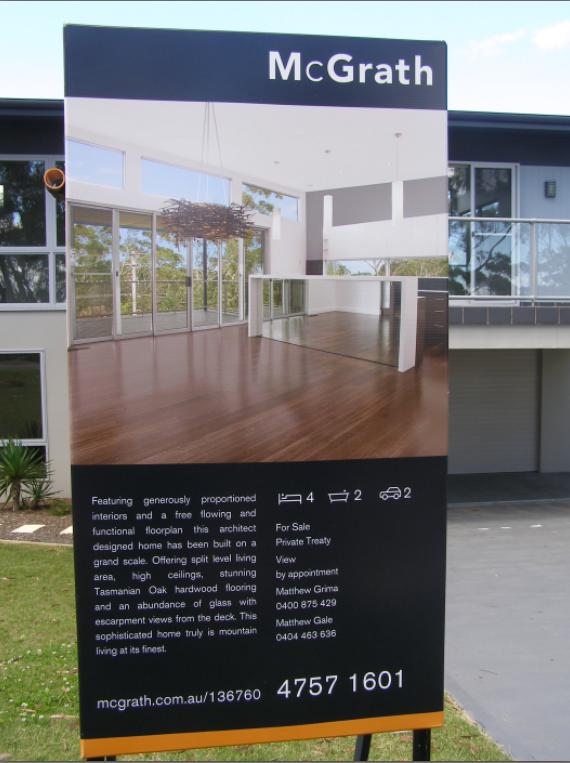 New house for sale on the Blue Mountains Escarpment
featuring “Tasmanian Oak hardwood flooring” as a key selling point.
[Photo by Editor, 20120111, Photo © under ^Creative Commons] New house for sale on the Blue Mountains Escarpment
featuring “Tasmanian Oak hardwood flooring” as a key selling point.
[Photo by Editor, 20120111, Photo © under ^Creative Commons]
.
Tasmanian Oak, which is typically abbreviated as Tassie Oak, does not exist as a real tree, but as a contrived timber flooring brand marketed to household consumers by the timber industry.
The trees sourced to produce Tassie Oak Flooring are from old growth Tasmanian native forests that are either Eucalyptus delegatensis (Alpine Ash), or Eucalyptus obliqua (Stringybark or Messmate) or else Eucalyptus regnans (Mountain Ash or Swamp Gum).
Eucalyptus Regnans is the largest flowering plant and hardwood tree in the world. Historically, it has been known to attain heights over 100 meters (330 ft) and is one of the highest tree species in the world. The tallest measured living specimen, named Centurion, stands 99.6 meters tall in Tasmania.
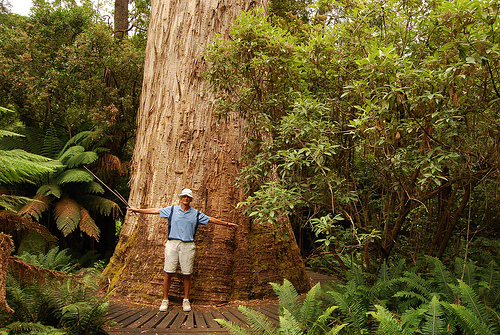 Eucalyptus regnans
before becoming someone’s Tassie Oak floor
Eucalyptus regnans
before becoming someone’s Tassie Oak floor
.
Tasmania is well known to travellers looking for pristine beauty and unspoiled wilderness. Besides unique flora and fauna including the endangered Tasmanian Devil, it is also home to the giant Eucalyptus. Tasmanian Tourism is all about marketing spin hiding the clearfelled old growth just out of sight of the tourist road. Visit Mount Field and wonder over the majesty of the old growth, but dare not venture beyond to the tragic scale of wanton clearfell.
The reality is that Australian Forestry Standard (AFS) “Chain of Custody” eco-label is an exploitative con by the timber industry.
On Forestry Tasmania’s website ‘Island Specialty Timbers’ at Geeveston claims to be a licensed Chain of Custody member, FTT CoC 08005, “which is your guarantee that all our raw material and products are Tasmanian fine timbers sourced from forests whose management is certified to the Australian Forestry Standard”.
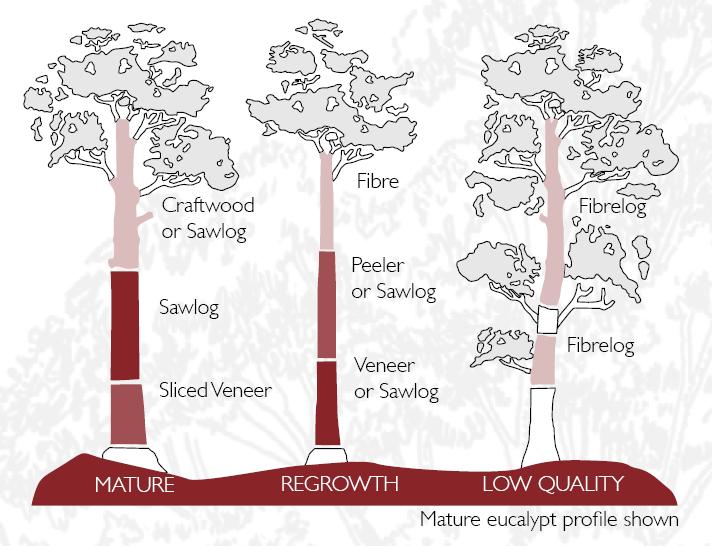 Only ‘sawlog’ sections of MATURE large hardwood trees are suitable for flooring
If there are no branch knots in the timber, then the timber has come from the trunks of mature large hardwood trees.
Such trees are not from plantations, but from rare and disappearing forest habitat.
Only ‘sawlog’ sections of MATURE large hardwood trees are suitable for flooring
If there are no branch knots in the timber, then the timber has come from the trunks of mature large hardwood trees.
Such trees are not from plantations, but from rare and disappearing forest habitat.
Forestry Standard AS 2796 ‘Sawn and Milled Native Hardwoods’ is the driving force for logging old growth habitat.
.
The supplier ‘Fine Timber Tasmania Inc.’ sells Tasmanian Myrtle (Myrtle Beech), Southern Sassafras, Leatherwood, Cheesewood, Musk, Blackwood, Eucalypt Burl, Figured Eucalypt, Huon pine, Celery Top Pine and King Billy Pine as ‘certified’.
The products of these ancient tree species are timber beams, posts, slabs and even raw logs – which simply can only come from old growth Tasmanian native forests.
Certification is AFS (Australian Forestry Standard) which has two separate standards
- Sustainable Forest Management (SFM) Certification – Australian Standard AS 4708
- Chain of Custody Certification (CoC) – Australian Standard AS 4707
.
The only benefit seems to be so that some developer and real estate agent can say hey your floorboards come from Tasmanian Old Growth and you are part of the problem; part of the Chain of Ecological Destruction, driving demand that sustains 20th Century Industrial Native Logging.
.
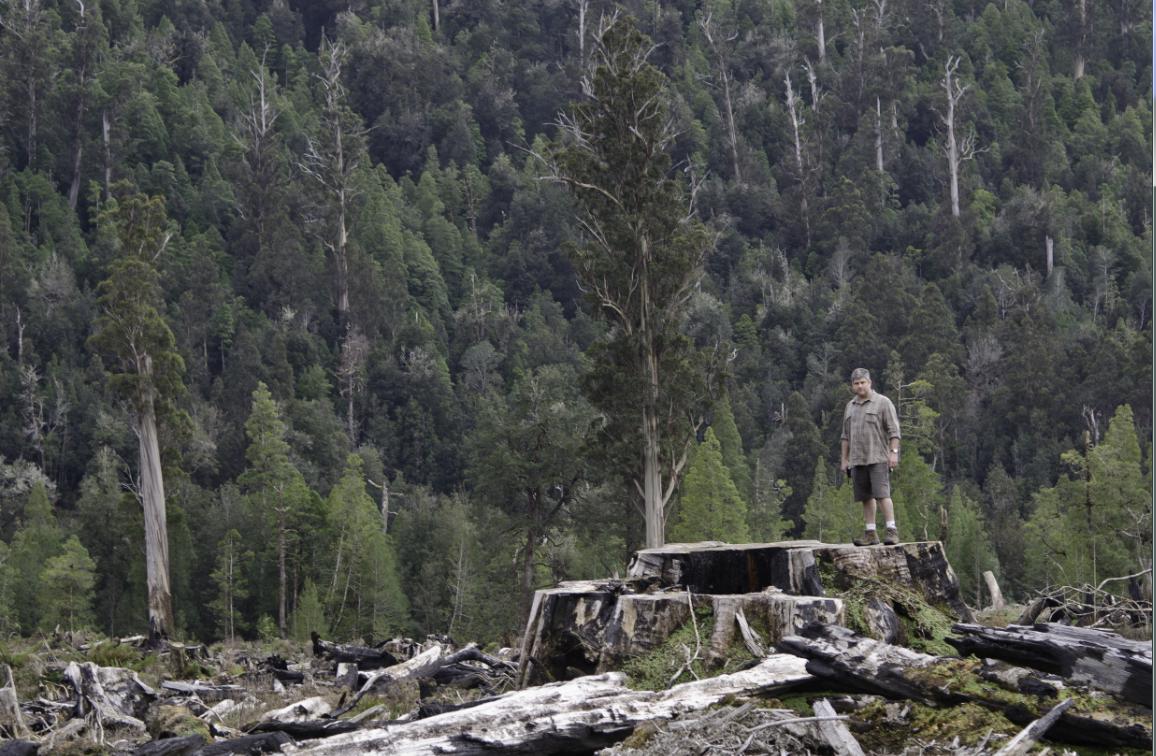
Tassie Oak Reality
Editor standing on a Eucalytus Regnans clearfelled in the Styx Valley
[Photo © Alan Lesheim 20110928]
.
Tags: Australian Forestry Standard, Chain of Custody, Chain of Custody certification, Chain of Ecological Destruction, Eucalyptus delegatensis, Eucalyptus obliqua, Eucalyptus regnans, Forestry Tasmania, hardwood flooring, Industrial Native Logging, Styx Forest, Styx Valley, Tasmania, Tasmanian Oak, Tasmanian Oak hardwood flooring, Tasmanian Sustainable Forest Management, Tassie Oak, Tassie Oak Reality, wilderness
Posted in Tasmania (AU), Threats from Deforestation, Threats to Wild Tasmania | No Comments »
Add this post to Del.icio.us - Digg
Monday, November 26th, 2012
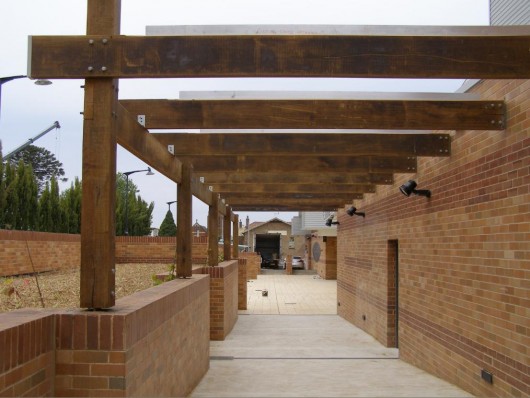 The pergola entrance to the Blue Mountains Cultural Centre
..using Old Growth ‘Tasmanian Oak’? The pergola entrance to the Blue Mountains Cultural Centre
..using Old Growth ‘Tasmanian Oak’?
.
.
The new Blue Mountains Cultural Centre opened at 30 Parke Street, Katoomba in the Blue Mountains west of Sydney on Saturday 17th November 2012.
The Blue Mountains Cultural Centre is a very large complex for the town of Katoomba and the sparsely populated region.
It features:
- an art gallery
- state-of-the-art library
- an extensive scenic viewing platform towards the Jamison Valley (and World Heritage wilderness beyond)
- seminar room
- multi-purpose workshop
- coffee shop
- gift shop
- meeting rooms
- an interpretative centre for the Greater Blue Mountains World Heritage Area.
.
It is a “purpose built cultural precinct; a place that simultaneously celebrates our unique sense of place, and allows us to explore what it means to live here, and share those understandings with those who visit our home.”
[Source: ‘Grand Opening – Blue Mountains Cultural Centre’, (special feature), Blue Mountains Gazette, 20121114, p.2]
.
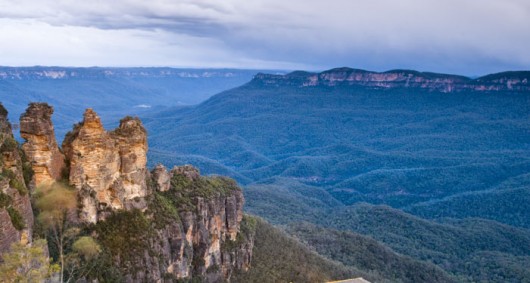 The Jamison Valley Wilderness
Contains natural stands of giant old growth Turpentines (Syncarpia glomulifera)
and old growth Mountain Blue Gums (Eucalyptus deanei) The Jamison Valley Wilderness
Contains natural stands of giant old growth Turpentines (Syncarpia glomulifera)
and old growth Mountain Blue Gums (Eucalyptus deanei)
.
Planning for the Blue Mountains Cultural Centre commenced way back in 1998 and there was much local community consultation in the planning process including with local Aboriginal people.
The building was commissioned by the local Blue Mountains Council and funded mainly by the New South Wales Government by more than $6 million. The Cultural Centre was designed by architects Hassell & Scott Carver Architects and built by Richard Crookes Constructions.
The Cultural Centre, now built, is positioned on the top (roof) level of a building which has, in the main, been constructed for a new relocated Coles supermarket and shopping arcade.
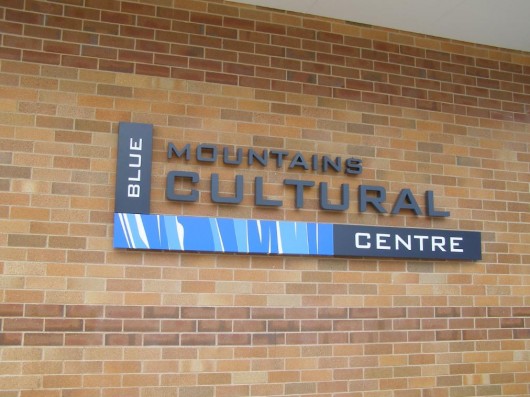 Blue Mountains Cultural Centre entrance Blue Mountains Cultural Centre entrance
.
While the now operational purposes of the Blue Mountains Cultural Centre promise to have considerable merit, there are two notable drawbacks associated with the recent construction of this building, which should not be forgotten to history.
.
1. The Entrance Pergola appears to be of ‘Tasmanian Oak‘
.
The timber pergola at the entrance has the distinctive colour and texture of ‘Tasmanian Oak‘, which is a timber industry generic marketing term used to group old growth native hardwood timber from a choice of one of the following three botannical species:
.
- Eucalyptus regnans
- Eucalyptus obliqua
- Eucalyptus delegatensis
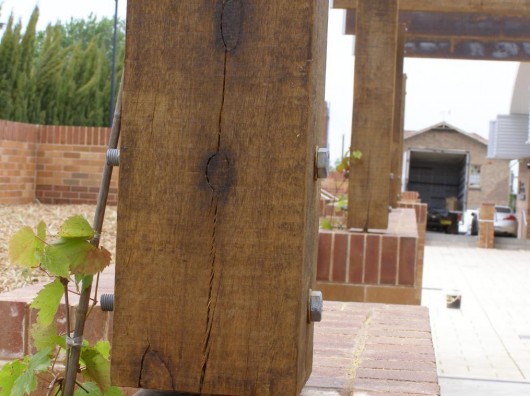 The distinctive colour and texture of Tasmanian Oak (treated and stained) The distinctive colour and texture of Tasmanian Oak (treated and stained)
These large posts and the beams have few knots and clearly have been sourced from the heartwood of very large and old native trees.
.
A ‘Tassie Oak’ comparison..
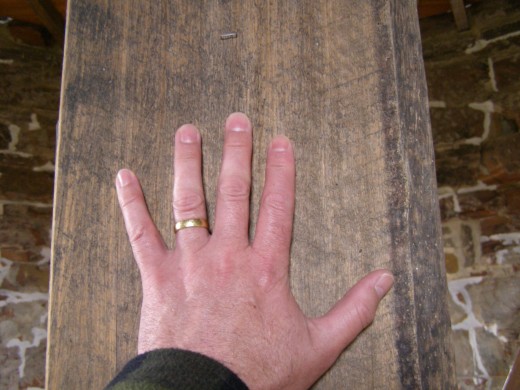 Tasmanian Oak in Tasmania
A new ten inch (wide) ‘Tasmanian Oak’ post inside Oatlands’ restored mill, Tasmania Tasmanian Oak in Tasmania
A new ten inch (wide) ‘Tasmanian Oak’ post inside Oatlands’ restored mill, Tasmania
It was probably from local Messmate/Stringybark (Eucalyptus obliqua), treated but not stained
(Photo by Editor, September 2009, Photo Free in Public Domain)
.
The name ‘Tasmanian Oak‘ was originally used by early European timber workers who believed the eucalypts showed the same strength as English Oak. When sourced from Tasmania, the wood is called Tasmanian Oak. When sourced from Victoria, the wood is called ‘Victorian Ash‘ or ‘Mountain Ash‘.
This uniquely Australian hardwood timber is light-coloured, ranging from straw to light reddish brown. It continues to be used in the building trade for panelling, flooring, furniture, framing, doors, stairs, external structures, joinery, reconstituted board and even as pulp for paper.
As the tallest flowering plant in the world, Eucalyptus regnans grow up to 100 metres tall. Whereas Eucalyptus delegatensis and Eucalyptus obliqua do not reach these heights; instead reaching about 70m with the tallest trees achieving 90 metres, which is no less considerable.
Read More about >Tasmanian Oak
[Source: Tasmanian Government, ^http://www.tastimber.tas.gov.au/species/pdfs/A4_ESB_Tasoak.pdf]
.
Nevertheless, all these species comprise timber logged from native old growth forests, not plantations. Such forests are rare and fast disappearing due to excessive logging practices – their dependent ecosystems, flora and fauna included.
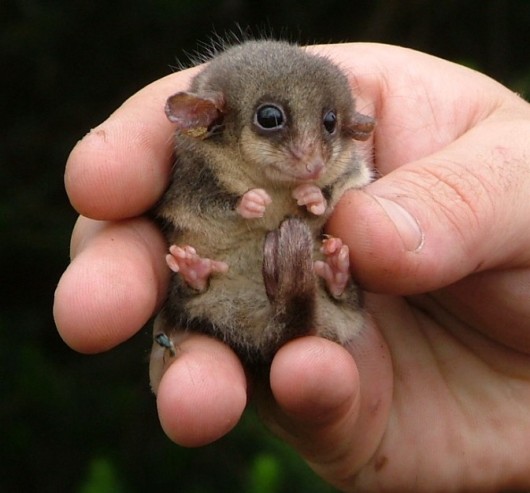 The Pygmy Possum (Genus Cercartetus)
Once prolific, but now threatened across the Blue Mountains heathland escarpment
due to misguided escarpment Government Arson labelled as ‘Hazard Reduction’
To the Rural Fire Service anything natural is phobically deemed to be a ‘hazard’.
[Source: ^http://www.warra.com/warra/research_projects/research_project_WRA116.html] The Pygmy Possum (Genus Cercartetus)
Once prolific, but now threatened across the Blue Mountains heathland escarpment
due to misguided escarpment Government Arson labelled as ‘Hazard Reduction’
To the Rural Fire Service anything natural is phobically deemed to be a ‘hazard’.
[Source: ^http://www.warra.com/warra/research_projects/research_project_WRA116.html]
.
So logging and use of this native old growth timber is unsustainable, despite Australian timber industry certification claims, which are proven dubious.
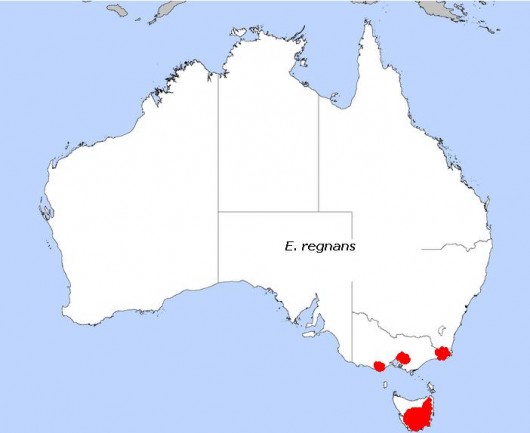 Tasmanian Oak/Mountain Ash (Eucalyptus regnans)
Its original distribution mainly from Tasmania
To a lesser extent variants come from the high rainfall areas of East Gippsland, Dandenong Ranges to Black Spur Range and the Otway Ranges. Tasmanian Oak/Mountain Ash (Eucalyptus regnans)
Its original distribution mainly from Tasmania
To a lesser extent variants come from the high rainfall areas of East Gippsland, Dandenong Ranges to Black Spur Range and the Otway Ranges.
.
A likely justification for the use of Tasmanian Oak for the Blue Mountains Cultural Centre’s entrance pergola is that Tasmanian Oak being a strong hardwood timber is load-bearing with few knots. While steel or another composite material could have been used, it is probable that the Tasmanian Oak was inadertently chosen for its aesthetic appeal, ignoring sustainability criteria.
Tasmanian Oak, like many Australian native hardwood timbers, is durable, termite and borer resistant, and fire resistant which makes its suitable for such an external structure, plus it is readily available and so a comparatively affordable building material. The timber has few knots because it is sourced from old growth trees, perhaps aged over one hundred years, and so the trunk is very tall and straight between the tree’s base and the branch canopy.
The Blue Mountains are dominated by Eucalypt forests, which contain flammable natural eucalyptus oil. Although the Cultural Centre is wholly within the township of Katoomba some distance from native forests, compliance with the Building Code of Australia would have mandated the building material options for the pergola, including the requirement that the external structure be of fire resistant material. Since the Cultural Centre is situated within the least risk buffer zone of a designated Bushfire Prone Area, the choice of building material would also have would been mandated under the Australian Standard AS 3959 ‘Construction of Buildings in Bushfire Prone Areas’ and with local council’s Blue Mountains Local Environment Plan 2005 – Regulation 86 : ‘Bush fire constructions standards’.
Under AS 3959, the construction of new buildings, the use of timber as an extrenal building material is permitted in the lower risk levels provided the timber species must comply with minimum crierian for Fire Retardant Treated Timber. The following timber species have been tested and found to meet the required parameters without having to be subjected to fire retardant treatment:
- Blackbutt
- Merbau
- Red Ironbark
- River Red Gum
- Silvertop Ash
- Spotted Gum
- Turpentine
.
[Source: The Australian Timber Database, ^http://www.timber.net.au/index.php/timber-in-bushfire-prone-areas.html]
.
The above hardwoods are all threatened species and are disappearing fast; all Australian bar Merbau which is being depleted from old growth Indonesian rainforests.
The timber used in the Cultural Centre’s timber pergola is arguably of Tasmanian Oak, which is known variously by the common names Mountain Ash, Victorian Ash, Swamp Gum, or Stringy Gum.
It is a species of Eucalyptus native to southeastern Australia, in Tasmania and Victoria. Historically, it has been known to attain heights over 100 metres (330 ft) and is one of the tallest tree species in the world. In native forests, the two species (Mountain Ash & Alpine Ash) that are combined to produce Victorian Ash are known to be two of the world’s largest trees, occasionally growing to over 100m in height.
Yet all these Australian native hardwood timbers are increasingly becoming scarcer as they are logged for such fire-resistant application.
.
The Building Standard for Fire Retardant Treated Timber is driving deforestation of Australian Old Growth Forests.
.
These old growth timbers are the dominant canaopy species for wet eucalypt forests restricted to cool, deep soiled, mostly mountainous areas to 1,000 metres (3,300 ft) altitude with high rainfall of over 1,200 millimetres (47 in) per year. The trees grow very quickly, at more than a metre a year, and can reach 65 metres (213 ft) in 50 years, with an average life-span of 400 years.
Eucalyptus regnans is the tallest of all flowering plants, and possibly the tallest of all plants, although no living specimens can make that claim.The tallest measured living specimen, named Centurion, stands 101 metres tall in Tasmania.
Before the discovery of Centurion, the tallest known specimen was Icarus Dream, which was rediscovered in Tasmania in January, 2005 and is 97 metres (318 ft) high. It was first measured by surveyors at 98.8 metres (324 ft) in 1962 but the documentation had been lost. Sixteen living trees in Tasmania have been reliably measured in excess of 90 metres (300 ft).
Historically, the tallest individual is claimed to be the Ferguson Tree, at 132.6 metres (435 ft), found in the Watts River region of Victoria in 1871 or 1872.
 Eucalyptus regnans
(marketed as ‘Tasmanian Oak’) Eucalyptus regnans
(marketed as ‘Tasmanian Oak’)
.
The fallen logs continue supporting a rich variety of life for centuries more on the forest floor. These restricted mountain ash forests provide vital yet shrinking habitat for many of Australia’s threatened species of fauna.
.
2. Construction created considerable land fill
.
It was observed throughout the construction phase of the Blue Mountains Cultural Centre, that daily large skips of builders waste from the site were loaded alongside in Parke Street.
These commercial skips were consistently yellow in colour and the same size – about six meters long and two meters wide (12 cubic metre capacity). Typically there were two such skips positioned and loaded with builders’ waste from the construction site each weekday. This was observed over the course of a year up until August 2012. They were loaded by bobcat-style machinery with all types of mixed rubbish – concrete, unwanted insulation, scrap metal, rubble, empty cans, you name it. There was no separation of waste observed for recycling. It would all have been trucked to landfill – possibly to either the nearby Katoomba or Blaxland waste management facilities, or else off-Mountain somewhere.
 Commercial skip used to cart away builders’ waste from the construction site
(Approximate scale) Commercial skip used to cart away builders’ waste from the construction site
(Approximate scale)
.
A conservative estimate of the land fill volume generated from the Cultural Centre construction site, which also included the Coles shopping complex, over the course of the year would be 12 cubic metres x 2 skips x 5 days x 42 weeks (generously allowing for 10 non work weeks out of 52) = over 5,000 cubic metres of land fill!
.
.
Cultural Centre’s Green Credentials
.
The above two environmental impacts are far from encouraging for this high profile community-serving 21st Century building, and within a World Heritage Area to boot.
The interpretative concept is one that is meant to inspire locals and visitors alike. So these two impacts are concerning and perhaps need to be clarified in the public literature produced by the Blue Mountains Council which commissioned the Cultural Centre.
The public impression promoted by the Blue Mountains Council is that the Cultural Centre is a eco-friendly building deserving praise.
<<It has free wi-fi and features a range of green initiatives including double-glazed windows, solar panels, rainwater harvesting, and low-energy LED lights in the gallery.>>
[Source: ‘Grand Opening – Blue Mountains Cultural Centre’, (special feature), Blue Mountains Gazette, 20121114, p.3]
.
<<The Blue Mountains Cultural Centre has a range of green (building) features that ensure that its impacts on the World Heritage environment is kept to a minimum.
Some of the features include:
- A fully insulated roof, double-brick air cavity walls and double-glazed windows assist to insulate the building.
- Extensive rainwater collection, harvested by the Centre and the Carrington Hotel and stored onsite, in an underground 50,000 litre tank
- On the roof there are 54, 10kW solar panels to reduce the Centre’s reliance on traditional energy sources.
- The ‘green roof’ treats a portion of the Cultural Centre’s water run-off (with the aid of a UV disinfection system) that is then used for irrigation and toilet flushing.
- The Centre is lit with a combination of efficient, long-life lighting sources and lighting zoning to allow separate switching and dimming of areas adjacent to windows.
- The City Art Gallery uses LED lighting technology to significantly reduce power consumption.
- The building orientation itself is designed to provide protection to the open courtyard areas from the prevailing westerly winds and exposure to northern sunlight.
.
With these initiatives in place, the Cultural Centre aims to reduce water consumption by 5.5 million litres each year and reduce energy usage of 1.8 million kWh/year — enough energy to power 246 homes in the region.>>
[Source: Blue Mountains Cultural Centre website, ^http://bluemountainsculturalcentre.com.au/about-us/history/environmental-design-aspects/]
.
A core part of the Blue Mountains Council’s 25 Year Vision for the Blue Mountains region focussed on ‘Looking After the Environment‘:
<<We value our surrounding bushland and the World Heritage National Park.
Recognising that the Blue Mountains natural environment is dynamic and changing, we look after and enjoy the healthy creeks and waterways, diverse flora and fauna and clean air.
Living in harmony with the environment, we care for the ecosystems and habitats that support life in the bush and in our backyards.
We conserve energy and the natural resources we use and reduce environmental impacts by living sustainably.>>
.
[Source: ‘Towards a More Sustainable Blue Mountains – A 25 Year Vision for the City, Blue Mountains Council ,2000-2025, ^http://www.sustainablebluemountains.net.au/our-city-vision/city-vision-publications/]
.
Ed: Such are noble goals however outsourced, but if they are dismissed just as ^’Greenwashing’ :the community message quicky becomes recognised as hollow spin and then any hard earned credibility risks being quickly lost.
.
Tags: Blue Mountains Council, Blue Mountains Cultural Centre, builders waste, Bushfire Prone Area, Eucalyptus delegatensis, Eucalyptus obliqua, Eucalyptus regnans, Fire Retardant Treated Timber, land fill, Mountain Ash, pergola, Tasmanian Oak, Tassie Oak, Victorian Ash
Posted in Blue Mountains (AU), Threats from Development, Threats from Greenwashing | No Comments »
Add this post to Del.icio.us - Digg
Friday, December 30th, 2011
This is a scab: . .
These are Forestry Scabs:
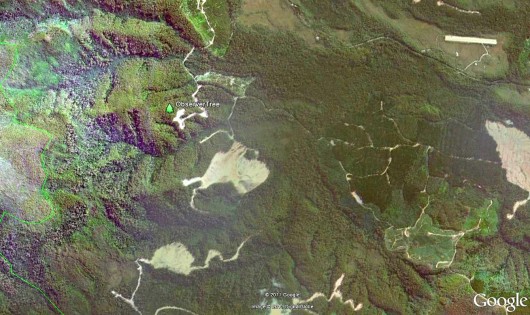 Forestry Scabs of clearfelled Tasmanian endangered old-growth forests
Google Earth reveals the clearfell truth behind the Forestry propaganda
(Click satellite image to enlarge – note environmental protestors’ ObserverTree)
To download Google Earth software (93MB), go to: ^http://www.google.com/earth/index.html Forestry Scabs of clearfelled Tasmanian endangered old-growth forests
Google Earth reveals the clearfell truth behind the Forestry propaganda
(Click satellite image to enlarge – note environmental protestors’ ObserverTree)
To download Google Earth software (93MB), go to: ^http://www.google.com/earth/index.html
.
This is an aerial close up of Forestry Scabs:
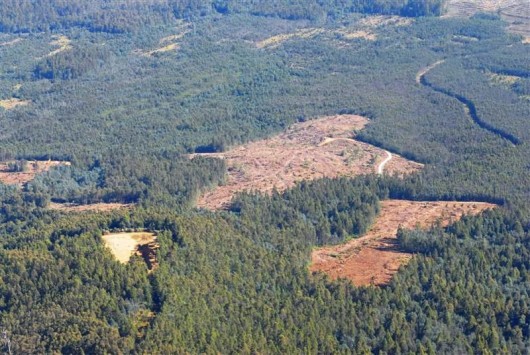 Forestry Scabs pocking the endangered Upper Florentine Forest, 2011 Forestry Scabs pocking the endangered Upper Florentine Forest, 2011
.
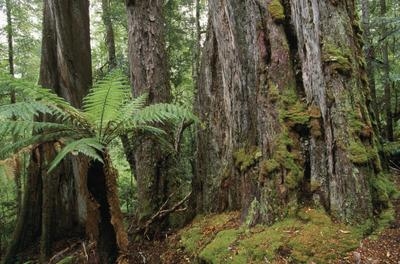 This is the ‘Forestry Plunder’
Old Growth which in the case of the Styx Valley, Forestry Tasmania labelled ‘Coupe SX015‘ This is the ‘Forestry Plunder’
Old Growth which in the case of the Styx Valley, Forestry Tasmania labelled ‘Coupe SX015‘
.
Recall 2006: ‘Forests protected: another tall story‘
.
[Source: ‘Forests protected: another tall story”, in Tasmanian Times, 20060327, ^http://tasmaniantimes.com/index.php/article/forests-protected-another-tall-story]
.
Two days after the election the police moved into the Styx Valley to apprehend a small band of protesters. An arrest was made and a 70-metre-tall tree holding a protest platform was blown up! Cable logging was set to resume in the Styx Valley of the Giants.
Yet last year both the state and federal Governments claimed that they had saved the giant trees of the Styx. Indeed, they claimed to have resolved the entire forests debate.
This week’s developments have given the lie to those claims. Not only is logging making a comeback in the Styx; it is also about to start in parts of the Weld and Upper Florentine that have never before seen a chainsaw. Other key areas are likely to follow, from the Tarkine in the far north-west, where there are still 400 square kilometres of threatened oldgrowth forest, to South Sister on the East Coast, Bruny Island in the south and the beleagured north-east highlands.
The Styx case is a classic example of how the governments deal with forest issues. One of the new reserves they have promised to create is the 336-hectare Styx Tall Trees Forest Reserve. This reserve occurs on either side of Skeleton Road, the road up which 4000 people marched on a cold, drizzly day in July 2003 to protest at logging.
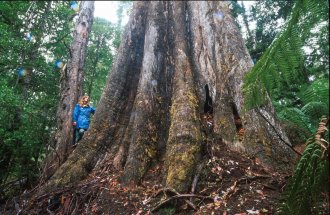
The Reserve’s southern boundary occurs very close to the huge stump on which speakers at the rally delivered their speeches. The reserve contains several well-known giants, including the Chapel Tree — an 85-metre-tall giant which is the second most massive known living thing in Tasmania. It also contains the Mount Tree and Icarus Dream, which, at 96 and 97 metres respectively, are the tallest known trees in the Southern Hemisphere. The Two Towers, Gothmog, the Perfect Tree and the Andromeda Twins are other registered giants within the reserve.
Declaration of this reserve will be very welcome. However, cold hard scrutiny reveals that very little loggable forest has been conceded by the industry here. About 20 hectares were already in the informal Andromeda Reserve, which contains some of the tall trees mentioned above. In addition, Forestry Tasmania’s Giant Trees policy and protocols, adopted in the wake of the El Grande debacle, require the establishment of buffers of at least 100 metres radius around each registered giant. The abundance of giant trees in this patch of forest means that logging had already been severely curtailed.
In essence, the creation of the Styx Tall Trees Reserve is a minimalist recognition that little logging could have proceeded amongst these statuesque giants anyway.
.
Protected the bare minimum area
.
A look at the mapped boundaries of the reserve shows them to be very convoluted. That’s because the reserve has been designed to accommodate areas planned for logging.
Last year, Forestry Tasmania scheduled 26-hectare coupe SX18F. This created a cable-logged cut on the steep slopes immediately south-east of the Reserve. The imminent destruction of the tall oldgrowth forests in coupe SX15A will mark the southern edge of the reserve. Immediately west of the reserve is the already-logged SX13D and the scheduled SX13K. Later in the logging schedule come SX18E and SX13J.
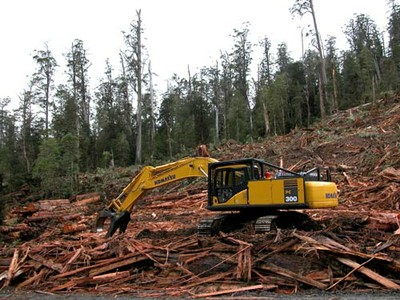 Forestry Tasmania logging the Styx Valley of its ancient old growth Forestry Tasmania logging the Styx Valley of its ancient old growth
.
The conclusions to be drawn from this are simple.
Forestry Tasmania protected the absolute bare minimum area of tall-eucalypt forest in the Styx Tall Trees Forest Reserve.
.
“Forestry Tasmana is now embarking on a program of ringing the reserve with new coupes. This appears to be an obvious bid to pre-empt any future expansion of the reserve. This strategy will have the effect of isolating the giants from adjacent protective forest. The reserve will become increasingly prone to the ‘edge effects’ of fire, wind and disease. This situation is not assisted by the messy design of the reserve.”
.
Forestry Tasmania will claim that it has protected these giants and met all of its legislated obligations. In fact, Forestry Tasmania has still failed to meet the targets set in the RFA for the protection of oldgrowth Eucalyptus regnans — the tallest flowering plant on Earth.
The Howard Government has been a party to this sham, providing millions of dollars of taxpayers’ funds to the logging industry and state government as ‘compensation’.
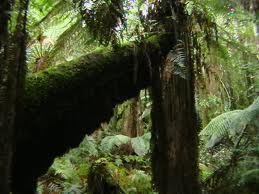
.
‘Forests Onslaught to Follow Election’
.
by Geoff Law, Tasmanian Campaign Coordinator, The Wilderness Society, 20060318, comment to an article in the Tasmanian Times of a speech made by Richard Flanagan, Parliament House Rally, Hobart, 16 March 2006, ^http://tasmaniantimes.com/index.php?/article/we-will-not-give-up/]
.
‘An onslaught of burning, logging and clearing in Tasmania’s forests will follow Saturday’s election, according to the Wilderness Society.
“New logging operations in the Styx, South Sister, Weld and Jackeys Marsh, huge new areas of tree-clearing, and another 30,000 hectares of burning are set to follow the election,” said the Society’s Tasmanian Campaign Coordinator, Geoff Law.
The burning program is set out in a brochure about forestry burn-offs distributed by Forestry Tasmania and FIAT in the Derwent Valley Gazette on Wednesday. It says: This autumn, the forest industry plans to prepare about 30,000 hectares of land for planting or sowing in patches scattered across Tasmania.
Logging is also poised to move into contentious forests in the Upper Florentine, at South Sister and unprotected parts of the Tarkine.
Mr Law said that his warning was based on:
- Forestry Tasmania’s attempt to log coupe SX15A in the Styx Valley, which was put on hold two weeks ago after the efforts of a handful of protesters. The logging machinery is poised and ready to go as soon as the election is out of the way.
- Forestry Tasmania’s interim draft Three Year Plan which has scheduled almost 16,000 hectares of tree-clearing for this calendar year as well as logging at South Sister, Jackeys Marsh, in the Weld and Upper Florentine Valleys and unprotected parts of the Tarkine
- The brochure on burning, which presents ‘Facts about the forest industry’s planned burning program during Autumn’ and which foreshadows 30,000 hectares of burning this autumn.’
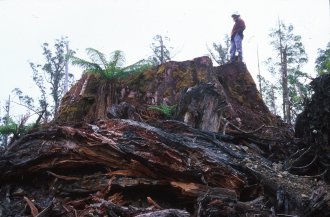 A Styx Legacy
A Eucalyptus regnans giant stump is all that remains of one of the huge trees
felled to make way for the logging road in coupe SX 15A in the Styx Valley.
^http://www.lexicon.net/peterc/Tasmania/Tas01.htm A Styx Legacy
A Eucalyptus regnans giant stump is all that remains of one of the huge trees
felled to make way for the logging road in coupe SX 15A in the Styx Valley.
^http://www.lexicon.net/peterc/Tasmania/Tas01.htm
.
‘Forestry Tasmania’s Sustainability Charter for Threatened species, communities and habitats‘
.
“Aim: Maintain viable populations of all existing animal and plant species and communities found in State forests.
This will involve:
- Increasing understanding of ecology and habitats of threatened species and communities and implementing appropriate management
- Active participation in the management of threatened species, communities and habitats
- Implementing specific strategies to protect threatened species and their habitats.”
.
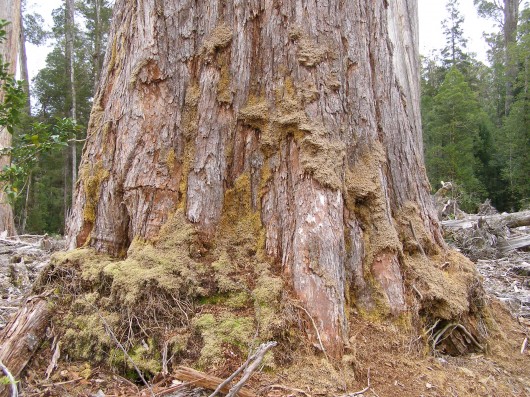 A rare giant Eucalyptus regnans of the nearby Upper Florentine
(Photo by Editor 20110928, free in public domain, click photo to enlarge) A rare giant Eucalyptus regnans of the nearby Upper Florentine
(Photo by Editor 20110928, free in public domain, click photo to enlarge)
.
2012 Year of the Forestry Scab?
.
In late 2011 and now going into 2012, Forestry Tasmania are at it again, trying to clearfell the Styx Valley of its old growth.
Get the lastest from the forest protest at The ObserverTree below Mount Mueller in the Styx Valley.
.
Tags: Andromeda Twins, Chapel Tree, coupe SX15A, Eucalyptus regnans, forestry scab, Forestry Tasmania, Google Earth, Gothmog, Icarus Dream, Mount Tree, old growth forest, Perfect Tree, Styx Forest, Styx Tall Trees Forest Reserve, Styx Valley, Styx Valley of the Giants, Tasmania, Tasmanian Times, The ObserverTree, Two Towers, Upper Florentine Forest
Posted in Tasmania (AU), Threats from Deforestation, Threats to Wild Tasmania | No Comments »
Add this post to Del.icio.us - Digg
Saturday, October 8th, 2011
Tasmania’s ancient Eucalyptus regnans of the Upper Florentine, South-West Tasmania…chainsawed in utter spite by Forestry Tasmania in its infamous forest raid on Tuesday 13th January 2009.
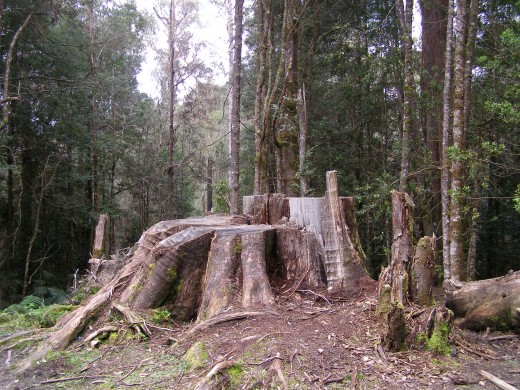 (Photo at Camp Flozza, Upper Florentine, South-West Tasmania, by editor 20110928,
Photo free as always in public domain – click to enlarge, then click to enlarge again)
(Photo at Camp Flozza, Upper Florentine, South-West Tasmania, by editor 20110928,
Photo free as always in public domain – click to enlarge, then click to enlarge again)
.
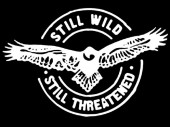 ^www.stillwildstillthreatened.org
^www.stillwildstillthreatened.org
.
‘There are people at Forestry who obviously don’t see green,
they see red..
The bunker mentality surfaces,
the big boots go in,
the chainsaws are fired up.
and ‘Common Sense’…goes out the window.’
[Source: Editorial, The Mercury, 20070219]
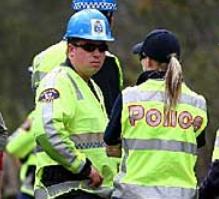
.
.
The 2009 Bartlett-Gordon Old Growth Massacre
 Then Tasmanian Premier David Bartlett Then Tasmanian Premier David Bartlett
.
 Then Forestry Tasmania Managing Director Bob Gordon Then Forestry Tasmania Managing Director Bob Gordon
.
13 January 2009: ‘Camp Floz Busted…Camp Flozza was raided by 60 cops this morning. They are back in force to ensure logging starts in the pristine Upper Florentine. They are held off by 3 conservationists in 50m high tree sits, 2 in cars locked to the road, and one in a tunnel.’
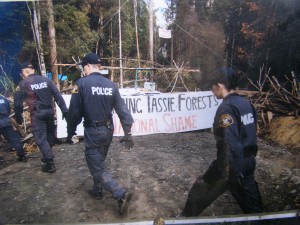 . .
‘Push came to shove in the Upper Florentine Valley yesterday. Scuffles broke out as about 200 protesters confronted a line of police blocking access to a contested logging road. Police arrested 15 people during yesterday’s Community Walk-In For the Florentine march.
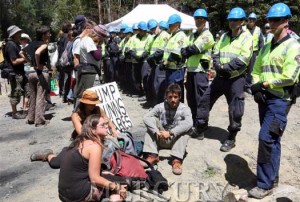
…Most of the old-growth forest to be cut in the area will become woodchips.
The two-year-old protest camp was destroyed on Tuesday although four protesters continued a vigil on two treetop platforms. They could be heard shouting their defiance throughout yesterday’s protest.
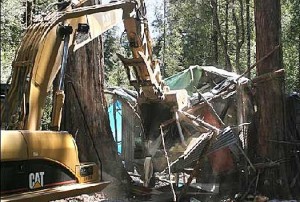
“It makes a mockery of the clever and kind Bartlett rhetoric when carbon-rich old-growth forests in an intact valley of World Heritage value are being opened up with a brand new logging road for clearfelling.” ~ Wilderness Society spokesman Vica Bayley.

Late yesterday, Derwent district forest manager Steve Whiteley said contractors had resumed work. “Our staff and contractors are cleaning up the site of Camp Florentine and undertaking road repair and construction,” he said. “We have had plans in place for several years to harvest a 50ha coupe and to build four kilometres of road.’
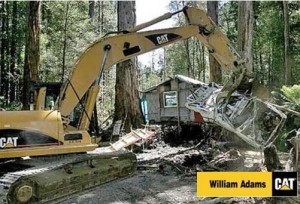
[Source: Arrests at Camp Flozza’, by David Killick, 20090114, ^http://www.themercury.com.au/article/2009/01/14/49611_tasmania-news.html]
.
.
‘Eyes that see much, and have so much seen’
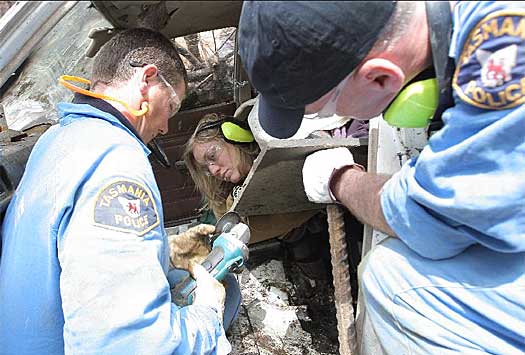 Taking a last stand to save Tasmania’s ancient forests
January 2009 police raid Camp Flozza, the front line defence of the Upper Florentine Forests Taking a last stand to save Tasmania’s ancient forests
January 2009 police raid Camp Flozza, the front line defence of the Upper Florentine Forests
.
 “Here’s to the crazy ones, the misfits, the rebels, the troublemakers, the round pegs in the square holes “Here’s to the crazy ones, the misfits, the rebels, the troublemakers, the round pegs in the square holes
… the ones who see things differently — they’re not fond of rules… You can quote them, disagree with them, glorify or vilify them, but the only thing you can’t do is ignore them because they change things… they push the human race forward,
and while some may see them as the crazy ones, we see genius,
because the ones who are crazy enough to think that they can change the world, are the ones who do.”
~ Steve Jobs (1995-2011)
.
.
O Brave.. ‘New Tasmania?’
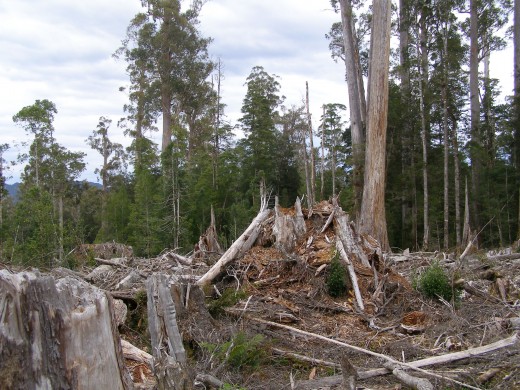
Upper Florentine under current industrial attack from Forestry Tasmania
(Photo at Camp Flozza by editor 20110928, free in public domain – click to enlarge, then click to enlarge again)
.
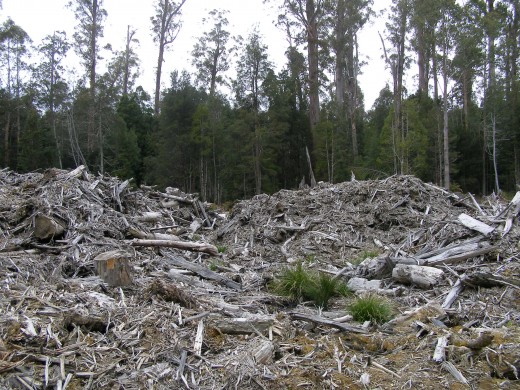 …those who come raiding at dawn.
(Photo at Camp Flozza by editor 20110928, free in public domain – click to enlarge, then click to enlarge again) …those who come raiding at dawn.
(Photo at Camp Flozza by editor 20110928, free in public domain – click to enlarge, then click to enlarge again)
.
‘The struggle for the soul of the island has raged for 200 years.
And it rages still, and still governments divide us against ourselves.
Resistance now is the staunch child of resistance past.
And it bodes for the future.’
~ Pete Hay
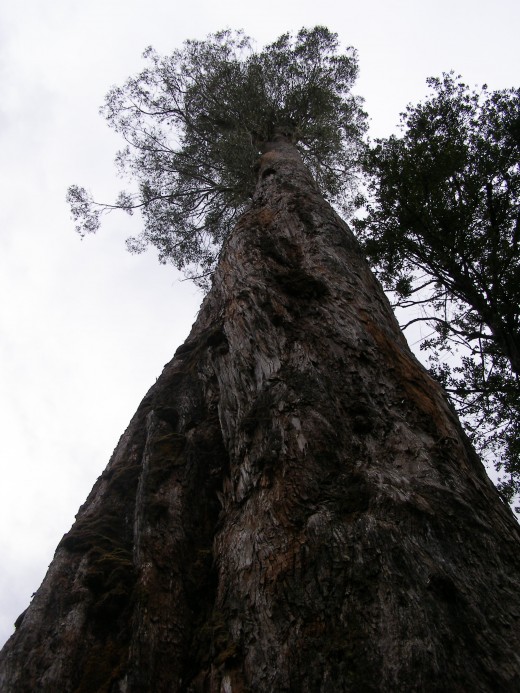 (Photo at Camp Flozza by editor 20110928, free in public domain – click to enlarge, then click to enlarge again)
(Photo at Camp Flozza by editor 20110928, free in public domain – click to enlarge, then click to enlarge again)
.
‘What must I do to protect you – he yells the trees…’
~ Barney Roberts
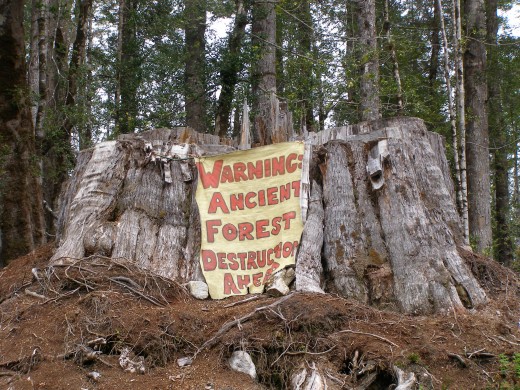 (Photo at Camp Flozza by editor 20110928, free in public domain – click to enlarge, then click to enlarge again) (Photo at Camp Flozza by editor 20110928, free in public domain – click to enlarge, then click to enlarge again)
.
 (Photo at Camp Flozza January 2009 by Sam Rosewarne, The Mercury newspaper)
(Photo at Camp Flozza January 2009 by Sam Rosewarne, The Mercury newspaper)
.
‘Documentary photography offers the future a view of the past.
It bears witness in an age when publications turn toward entertainment, celebrity and spin.
This is the history of Tasmania.
It should be documented.’
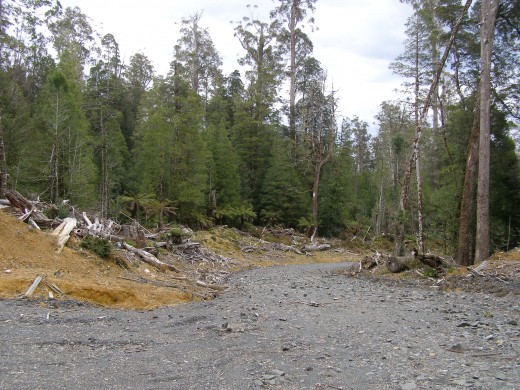 Foresty Tasmania ~ they came with 60 police,
they bulldozed their road through pristine old growth forest
(Photo at Camp Flozza by editor 20110928, free in public domain – click to enlarge, then click to enlarge again) Foresty Tasmania ~ they came with 60 police,
they bulldozed their road through pristine old growth forest
(Photo at Camp Flozza by editor 20110928, free in public domain – click to enlarge, then click to enlarge again)
.
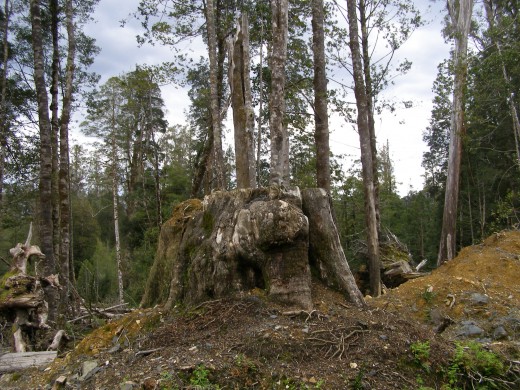 Forestry Spite
(Photo at Camp Flozza by editor 20110928, free in public domain – click to enlarge, then click to enlarge again) Forestry Spite
(Photo at Camp Flozza by editor 20110928, free in public domain – click to enlarge, then click to enlarge again)
.
[Quotes from Matt Newton & Pete Hay’s 2007 important photographic book , ‘The Forests’, ^http://www.matthewnewton.com.au/#/Documentary/The%20Forests/1]
.
.
Tags: 2009 Bartlett-Gordon Massacre, Bob Gordon, Camp Flozza, Chinese Imperial Dictatorship, David Bartlett, Eucalyptus regnans, forest exploitation, forestry spite, Forestry Tasmania, greedy commercial gain, Martin Niemöller, South-West Tasmania, Steve Jobs, Still Wild Still Threatened, Tasmania's holocaust, Tasmania's Thylacene, Tasmanian ancient forests, Upper Florentine Forest, utter spite
Posted in Tasmania (AU), Threats from Deforestation, Threats to Wild Tasmania | No Comments »
Add this post to Del.icio.us - Digg
Thursday, August 18th, 2011
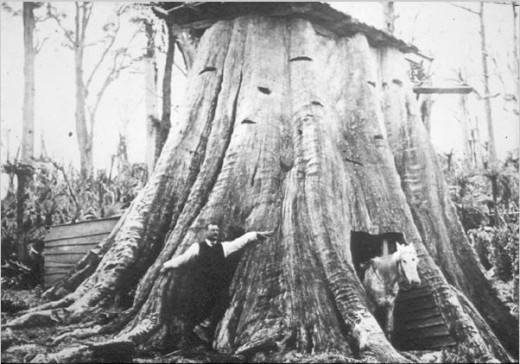
Gippsland Giants
by John Stephens
.
‘Do you know that possibly the biggest living thing in the world once lived in Gippsland and that its descendents still live here? No it’s not the blue whale, nor the giant kangaroo or the thylacine or even the black panther, it’s Eycalyptus regnans, the Victorian or Mountain Ash! These trees are the world’s tallest hardwoods and the tallest flowering plants.
The trees in the Tara Bulga Park are certainly imposing and of an impressive size, somewhere in the vicinity of sixty metres tall! You’ve seen Mountain Ash on drives or walks throughout the Strzelecki Ranges or the Baw Baw plateau. But I’m sorry to tell you, that you haven’t seen a real Mountain Ash and are most unlikely to ever see one. Of course I am talking about specimens that did exist before we “harvested” them. I don’t consider myself a “greenie” however I cannot be anything but amazed at the destructiveness of the human species.
During my “younger days” I spent many an enjoyable hour riding a motorcycle around the top end of Merriman and Traralgon Creeks. One of my greatest memories was seeing the stumps of some huge trees that had been logged, somewhere on the western side of the Merriman Creek headwaters, and imagining what they must have looked like in their original grandeur. I also came across the huge “historic” tree stumps at Mt Tassie and as many others have, I marvelled at their massive girth.
The Ada Tree near Powelltown, which is estimated to have existed for over three hundred years, is possibly the largest remaining specimen in Victoria. It has been preserved and is estimated to stand at about 76 metres, although it was significantly taller. The crown has been blown away either in a storm or struck by lightning, meaning the tree may have reached a height in the vicinity of 120 metres. Another giant, The Big Tree, in the Cumberland Tall Trees Reserve is 82 metres tall, but was 92 metres before a storm destroyed the top in 1959. What stuns me, is that if I imagine one of these trees to be the imposing Eucalyptus obliqua in the top corner of my block and it fell along the fence line, it would stretch the full 83 metres of the block!
“The Baron” height – 66m, girth 14.5m
 |
Near Narbethong – 91m, girth 7.7m
 |
I understand that to our pioneers the supply of forest, trees and timber seemed endless and they had a need to provide land for agriculture and development. However I do not understand their need to destroy everything that they saw as a challenge. Why did they have to destroy the Centennial Exhibition Tree that had stood in the Menzies Creek forest for hundreds of years until its demise in 1888? It was measured at over 122 metres after being felled and was reassembled for display at the exhibition in Melbourne. Surely it would have been better to take parties to visit the living tree in its natural surrounds and glory.
Part of an article written by Paul Edwards cleverly conveys what most of us feel about these giants – “When a tree gets old and tumbles, it becomes a noble thing — a fallen tree — but when it is cut down it turns into a log”. The best way to measure a tree is of course to do so when it has been cut down. This is essentially what happened to another giant at Thorpdale. It was felled in the1880s, measured by the surveyor G Cornthwaite, and found to have been 114.3 metres tall. I believe all that remains to signify the existence of this giant is a sign on the roadside indicating where it once stood, definitely far less impressive than the tree itself.
Some of these old trees must have been even more impressive. A 66 metre tall tree in Sassafras Gully in the Dandenongs and known as “The Baron” had a girth of 14.5 metres. The Bulga Stump, which was destroyed in the 1939 bushfires, famous for its huge girth of 34 metres! The Furmstons or Mueller Tree near Mt Monda was only 60 metres high when it fell in 1998 although it was estimated to be well over 100 metres when it was first discovered in the late nineteenth century. Another giant was a hollow stump in the Tarra Bulga area that had a roof and was used as a stable. The hollow Wonga Stump near Yarram was used as a church and a school until it was destroyed by fire in 1898.
The tallest known existing tree in the world is now a Californian Redwood (Sequoia semprivirens) found in the Humbolt Redwood State Park. It is 112.7 metres in height but is “small” compared to the tallest ever recorded, an American Douglas fir (Pseudotsuga menziesii) which was known to be 122 metres, equal to our Centennial Tree. However do these trees really compare to our own? A tree at Mt Baw Baw measured in 1889 by surveyor G W Robinson was reported to be 143 metres in height.
In 1872 the Victorian Government surveyor, William Ferguson, reported finding a fallen tree in the Healesville area that was 133 metres long. The top had been broken off in the fall and most of the crown burnt in a fire. Where it was broken the tree was approximately one metre in diameter and was estimated therefore to have been 152 metres tall!
Were there bigger specimens or are there still giants in the Gippsland forests? Maybe there was a tree of such dimensions that if in my imagination it fell the length of my block it would also complete the side boundary of the property behind mine.
[Source: ^ http://home.vicnet.net.au/~apslvg/gippslandGiants.html]
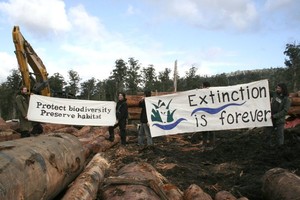
Title of this article is derived from two well known sayings:
- ‘Forgive them, for they know not what they do.’ Source: The Bible: ‘And Jesus said, “Father, forgive them, for they know not what they do.” And they cast lots to divide his garments.’
[© English Standard Version, Luke (23:34) 2001)]. These are supposedly Jesus’ words from the cross, asking forgiveness for those who put him to death. More widely, of course, the plea was for all humanity. [Rare historic photos of these magnificent trees are all that allow us to remember what once was. The saying is quite apt to old-growth trees, though I have removed the ‘Father, forgive them‘ clause.]
- ‘Lest we forget‘ Source: Rudyard Kipling’s poem of 1897, ‘Recessional’, which he composed on the occasion of Queen Victoria’s Diamond Jubilee in 1897. The poem, on the one hand, expresses pride in the British Empire, but, on the other, expresses an underlying sadness that the Empire might go the way of all previous empires. [Again, quite apt to old-growth trees.]
.
‘God of our fathers, known of old—
Lord of our far-flung battle line—
Beneath whose awful hand we hold
Dominion over palm and pine—
Lord God of Hosts, be with us yet,
Lest we forget—lest we forget!
The tumult and the shouting dies—
The Captains and the Kings depart—
Still stands Thine ancient sacrifice,
An humble and a contrite heart.
Lord God of Hosts, be with us yet,
Lest we forget—lest we forget!
Far-called our navies melt away—
On dune and headland sinks the fire—
Lo, all our pomp of yesterday
Is one with Nineveh and Tyre!
Judge of the Nations, spare us yet,
Lest we forget—lest we forget!
If, drunk with sight of power, we loose
Wild tongues that have not Thee in awe—
Such boastings as the Gentiles use,
Or lesser breeds without the Law—
Lord God of Hosts, be with us yet,
Lest we forget—lest we forget!
For heathen heart that puts her trust
In reeking tube and iron shard—
All valiant dust that builds on dust,
And guarding calls not Thee to guard.
For frantic boast and foolish word,
Thy Mercy on Thy People, Lord!
Amen.
.
– end of article –
Tags: Centennial Exhibition Tree, Dandenongs, Eucalyptus regnans, Gippsland, Gippsland Giants, Logging, Menzies Creek, Mountain Ash, Mt Baw Baw, Mueller Tree, old growth, The Baron, The Big Tree, The Bulga Stump, Thorpdale, world's largest trees
Posted in Gippsland (AU), Threats from Deforestation | No Comments »
Add this post to Del.icio.us - Digg
Wednesday, August 17th, 2011
The following article was initially posted by Tigerquoll on 20090423 on CanDoBetter.net:
.
I have to pinch myself to realise this is 2009 and not 1959!
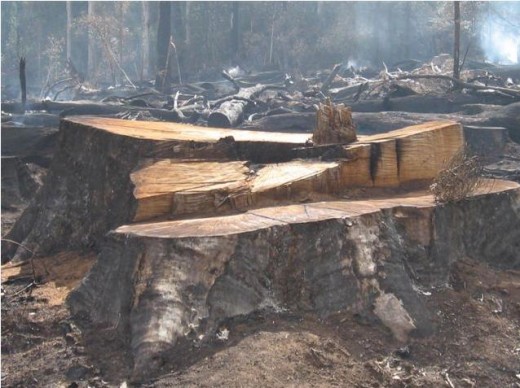 Vicforests’ logging arson to 600 year old Eucalyptus regnans in East Gippsland, Victoria, Australia, 20090423
http://www.lighterfootprints.org/2009/04/brown-mountain-destruction-complete.html Vicforests’ logging arson to 600 year old Eucalyptus regnans in East Gippsland, Victoria, Australia, 20090423
http://www.lighterfootprints.org/2009/04/brown-mountain-destruction-complete.html
This photo just in from the old growth forests of Brown Mountain in East Gippsland – home of remnant giant Australian natives dating up to 600 years old. This photo shows the Brown Mountain Massacre yesterday (23 April 2009) of these magnificent giants by VicForests on its celebrated World Forestry Day.
In 2006, the then Premier, Steve Bracks, made a promise to “protect all significant stands of old growth currently available for logging” (hollow words by a man of renouned indecision). The immense trees that have sheltered and raised hundreds of generations of owls and gliding possums are now being hacked down by VicForests.” [Source: Environment East Gippsland’s, ‘The Potoroo Review‘, Issue 196]
VicForests’ leadership inspiration, Warren Hodgson, must feel pround leaving such a legacy of heritage denial to future Gippslanders, Victorian and Australians. “Warren Hodgson has been involved in policy development at the highest level of the Victorian public sector and has previously led the Victorian Government efforts on Public Private Partnerships. He has a background in the manufacturing industry in New Zealand and in the provision of contract services to public and private sectors throughout the Asia-Pacific region.”
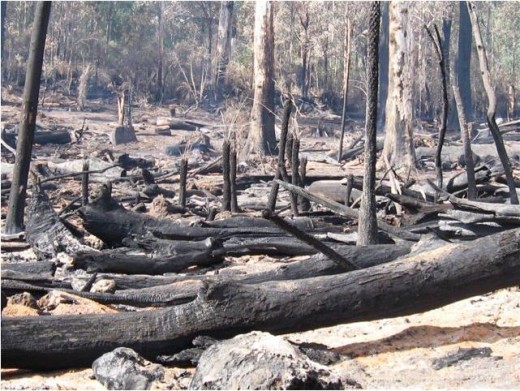
.
.
.
‘VicForests’ (from its website) presents its vision and values as:
.
Our vision:
“To be a leader in a sustainable Victorian timber industry.”
Our purpose:
“To build a responsible business that generates the best community value from the commercial management of Victoria’s State forests.”
Our values:
“Accountable – VicForests is accountable to the Victorian Government. Its actions and those of its employees must be consistent with relevant Government policy and priorities.”
Committed – “VicForests is committed to the fulfilment of its purpose and the achievement of its vision for the Victorian timber industry.”
Safe – “VicForests and its staff will manage safe workplaces for all staff and contractors, and are committed to continuous improvement in safety systems and outcomes, in accordance with its Occupational Health and Safety Policy.”
Customer focused – “VicForests will be responsive to its customers’ requirements and seek customer satisfaction, in accordance with its commercial nature.”
Ethical – “VicForests will operate in an ethical and environmentally responsible manner in all its undertakings to ensure the integrity and sustainability of the native forest timber industry in Victoria.”
Innovative – “VicForests seeks to be innovative and adaptable in its organisational, business and forestry management operations.”
Open – “VicForests will manage the commercial harvesting and sale of timber in a framework of openness and transparency.”
Professional – “VicForests and its staff will operate in a professional manner in all undertakings to ensure the best possible outcomes for the organisation, its customers, the Victorian timber industry and its stakeholders.”
Sustainable – “VicForests will pursue the highest standards for forest management practices through the continued development of its Sustainable Forest Management System and by ensuring its triple bottom line performance against the requirements of Victoria’s Sustainability Charter for State forests.”
[SOURCE: http://www.vicforests.com.au/vision-purpose-and-values.htm]
.
.
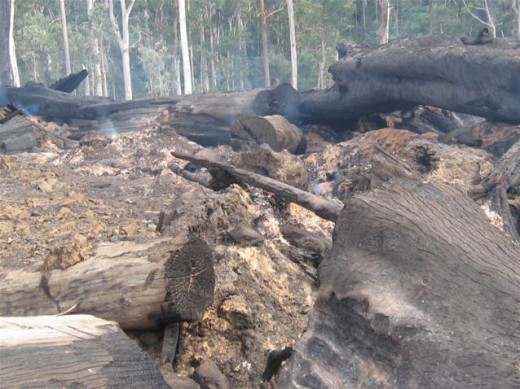
I have to pinch myself to realise this is 2009 and not 1959!
.
.
.
Brown Mountain – destruction complete!
.
An urgent message from Jill Redwood of Environment East Gippsland (from 20090424). . .
“These were taken yesterday – VicForests mission accomplished.
This ancient stand of 600(plus) year old forest has now been fully annihilated and ready for conversion to a palm-oil plantation. Or it might as well be.
They’ll actually be converted to a pulpwood plantation for the Japanese paper industry.
The other four remaining stands of old growth adjoining are on the logging schedule.
Please help in whatever way you can.”
~ Jill [Environment East Gippsland]
.
.
.
Read More:
.
[1] ^http://www.greenlivingpedia.org/Brown_Mountain_old_growth_forest
[2] ^http://www.eastgippsland.net.au/
[3] ^http://www.eastgippsland.net.au/?q=campaigns/brown_mountain
.
– end of article –
Saturday, July 23rd, 2011
 Posted by Tigerquoll: Posted by Tigerquoll:
The VicMolesters are at it again.
Chainsaw-wielding loggers of VicForests are set to target old growth Mountain Ash near Sylvia Creek in the Central Highlands, to Melbourne’s north, east of Kinglake. That an inferno that was Black Saturday in February 2009 ripped through forests in the area around Narbethong, Toolangi and Kinglake matters squat to these woodchip mercenaries.
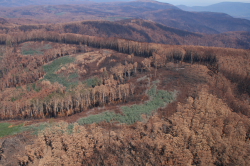 The Burned Area Emergency Response Report (BAER) commissioned by the Brumby Government after the 2009 bushfires recommended preserving refuge areas such as those in Toolangi for biodiversity recovery. The Burned Area Emergency Response Report (BAER) commissioned by the Brumby Government after the 2009 bushfires recommended preserving refuge areas such as those in Toolangi for biodiversity recovery.
That the targeted forests have become isolated islands of habitat to rare wildlife matters squat to them. That the forests are home to Victoria’s endangered and disappearing Leadbeater’s possum, the Spotted-Tail Quoll, the Sooty Owl, and Baw Baw frog are but collateral damage to these bastards. “Over half the Leadbeater’s Possum’s forest habitat was destroyed in the Black Saturday bushfires, so every last bit that survives is incredibly precious, and essential to this tiny animals’ survival,” said spokesperson for local group ‘My Environment’ Sarah Rees.

“The criteria the government is using to identify Leadbeater’s Possum habitat are too conservative. We’re talking about Victoria’s wildlife emblem, we should be making sure they multiply and flourish, not simply cling on to the edge of survival.”
VicForests old growth logging is all for a quick buck from woodchip sales to make Reflex Paper. They would sell their daughters for less.
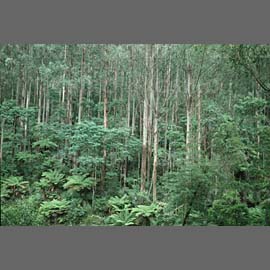
“DSE has confirmed the logging coupe contains old growth trees, even though VicForests and Government Minister Louise Asher insisted last week that it was not old growth forest,” said Wilderness Society forest campaigner Luke Chamberlain.
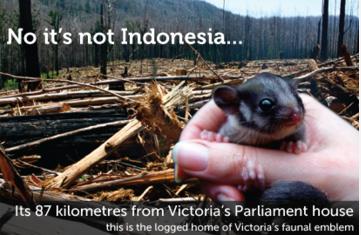
Tigerquoll
Suggan Buggan
Snowy River Region
Victoria 3885
Australia
Tags: Baw Baw Frog, Black Saturday, Burned Area Emergency Response Report, DSE, Eucalyptus regnans, Leadbeaters Possum, old growth granny killers, Sooty Owl, Spotted-Tail Quoll, Sylvia Creek, The Wilderness Society, Toolangi, VicForests, VicMolesters
Posted in Owls, Possums and Gliders, Quolls, Reptiles, Threats from Bushfire, Threats from Deforestation | No Comments »
Add this post to Del.icio.us - Digg
Saturday, March 26th, 2011
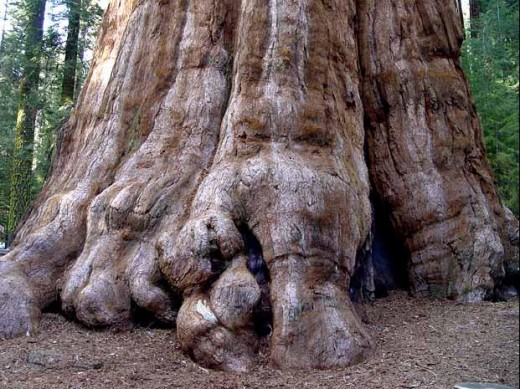 ‘General Sherman’ ~ just another sequoia? (pronounced ‘sequoya’)
Sequoia & Kings Canyon, Sierra Nevada, California, USA
^http://www.nps.gov/seki/historyculture/gfgst.htm ‘General Sherman’ ~ just another sequoia? (pronounced ‘sequoya’)
Sequoia & Kings Canyon, Sierra Nevada, California, USA
^http://www.nps.gov/seki/historyculture/gfgst.htm
.
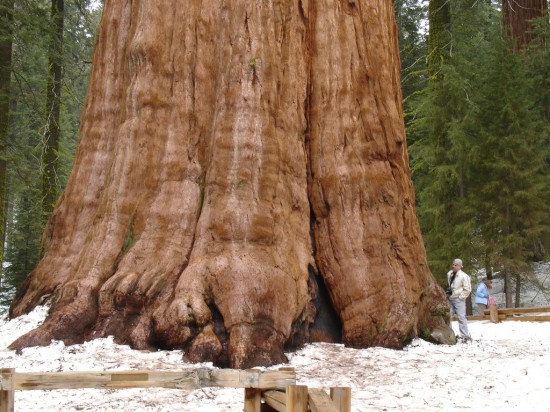 The General Sherman Tree
– the world’s largest tree, is the prime visitor attraction in the Giant Forest.
[Source: ^http://www.nps.gov/seki/historyculture/gfgst.htm]
. The General Sherman Tree
– the world’s largest tree, is the prime visitor attraction in the Giant Forest.
[Source: ^http://www.nps.gov/seki/historyculture/gfgst.htm]
.
“Sequoia sempervirens’ common names include coast redwood, California redwood, and giant redwood. It is an evergreen, long-lived, monoecious tree living 1200–1800 years or more. This species includes the (current) tallest trees on Earth, reaching up to 379 feet (115.52 m) in height and up to 26 feet (7.9 m) diameter at breast height. Before commercial logging and clearing began by the 1850s, this massive tree occurred naturally in an estimated 2.1 million acres along much of coastal California (excluding southern California where rainfall is not abundant enough) and the southwestern corner of coastal Oregon within the United States.” [Source: ^Wikipedia – read more].
.
“The Sierra Nevada is still growing today. The mountains gain height during earthquakes on the east side of the range. But the mountains are being shortened by erosion almost as quickly as they grow. This erosion has deposited sediments thousands of feet thick on the floor of the San Joaquin Valley.”
[Source: ^http://www.nps.gov/seki/historyculture/gfgst.htm]
.
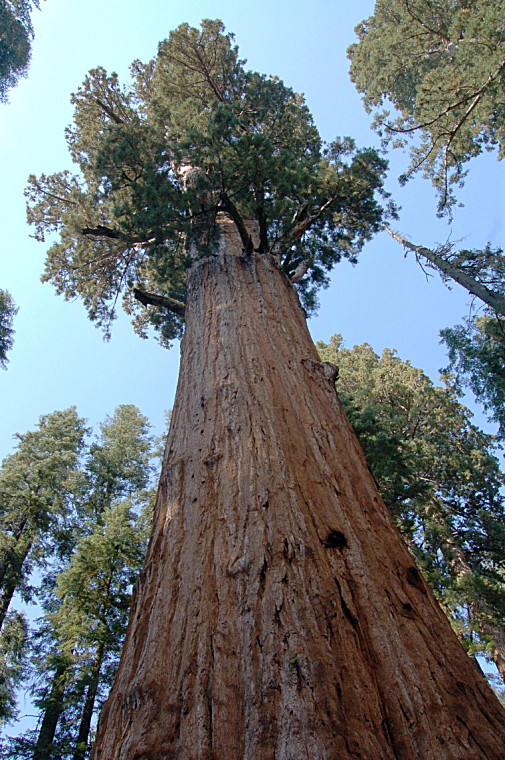
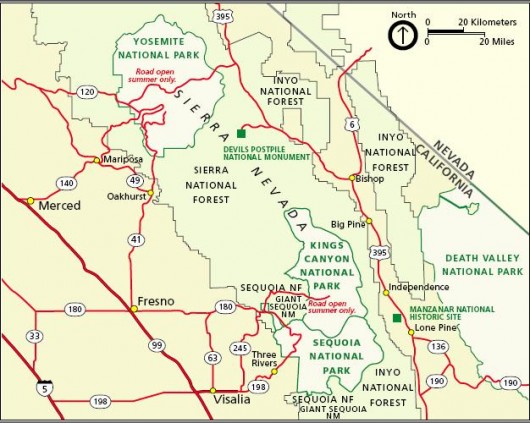
.
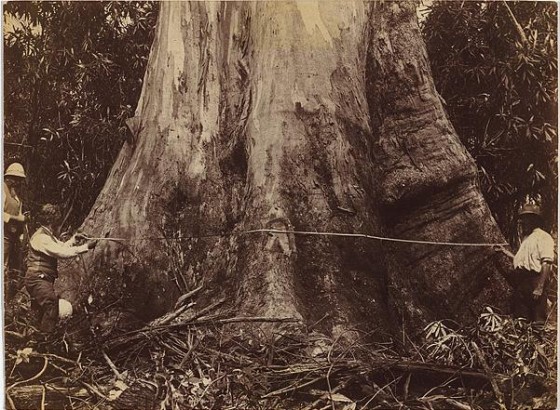 ‘Giant tree’ at Neerim (Gippsland, Victoria, Australia), forty feet girth c.1889
AUSTRALASIAN ART, Photo by Nicholas CAIRE, b.1837 Guernsey, United Kingdom – Australia d.1918[Gelatin silver photograph image 15.0 h x 20.2 w cm, Purchased 1983, Accession No: NGA 83.3083]
.
.
“The men shown here measuring the diameter of a giant eucalypt were not loggers or tree-lovers. They were attempting to determine whether Australian trees were bigger than the famed 400-foot giant redwoods of California. It was mostly national pride surrounding the Australian Centennial of European settlement which motivated scientists and photographers in the 1880s to seek out the remaining giant trees in the more remote areas of Victoria. The Americans claimed that their redwoods were the greatest because of their combined height and girth. In the dense Australian bush, it
was easier to measure the girth than the height and presented a much more dramatic image for a photograph.
.
The general public followed the giant tree debate in the papers and also purchased photographs of them and other idyllic bush scenes. By the late 19th century, the Australian population mostly lived and worked in the cities. They became day-trippers and used the new railway networks to take their recreation in the bush. Nicholas Caire, one of the most active photographers to seek out and record the giant trees, travelled over a number of years on the new rail line to Neerim town reserve.
.
Australia’s giant trees were widely depicted in colonial art as mighty symbols of the pre-settlement and pioneer era. Caire, whilst accepting the desirability of logging and urban development, was also one of those who argued for the preservation of examples for future generations.
.
Most of the awesome giant trees were felled or burnt in his lifetime. Now they are preserved only in photographs.” ‘Giant tree’ at Neerim (Gippsland, Victoria, Australia), forty feet girth c.1889
AUSTRALASIAN ART, Photo by Nicholas CAIRE, b.1837 Guernsey, United Kingdom – Australia d.1918[Gelatin silver photograph image 15.0 h x 20.2 w cm, Purchased 1983, Accession No: NGA 83.3083]
.
.
“The men shown here measuring the diameter of a giant eucalypt were not loggers or tree-lovers. They were attempting to determine whether Australian trees were bigger than the famed 400-foot giant redwoods of California. It was mostly national pride surrounding the Australian Centennial of European settlement which motivated scientists and photographers in the 1880s to seek out the remaining giant trees in the more remote areas of Victoria. The Americans claimed that their redwoods were the greatest because of their combined height and girth. In the dense Australian bush, it
was easier to measure the girth than the height and presented a much more dramatic image for a photograph.
.
The general public followed the giant tree debate in the papers and also purchased photographs of them and other idyllic bush scenes. By the late 19th century, the Australian population mostly lived and worked in the cities. They became day-trippers and used the new railway networks to take their recreation in the bush. Nicholas Caire, one of the most active photographers to seek out and record the giant trees, travelled over a number of years on the new rail line to Neerim town reserve.
.
Australia’s giant trees were widely depicted in colonial art as mighty symbols of the pre-settlement and pioneer era. Caire, whilst accepting the desirability of logging and urban development, was also one of those who argued for the preservation of examples for future generations.
.
Most of the awesome giant trees were felled or burnt in his lifetime. Now they are preserved only in photographs.”
~Anne O’Hehir
.
Indeed…
“The largest tree on Planet Earth is not the California Redwood, but the Mountain Ash (Eucalyptus regnans). The largest trees ever recorded were located in southern Australia near present day Melbourne. The world’s largest tree was the Ferguson Tree at over 500 feet (154m). It was measured by Surveyor Ferguson in 1872 in the Watts River Catchment near Healesville.”
Read More: Click: http://www.baddevelopers.green.net.au/Docs/talltrees.htm
.
Source: Text © National Gallery of Australia, Canberra 2010, Anne Gray (ed), Australian art in the National Gallery of Australia, National Gallery of Australia, Canberra, 2002, http://cs.nga.gov.au/Detail-LRG.cfm?IRN=106546&View=LRG
.
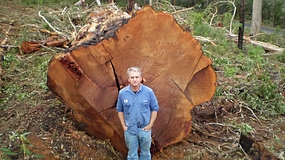
.
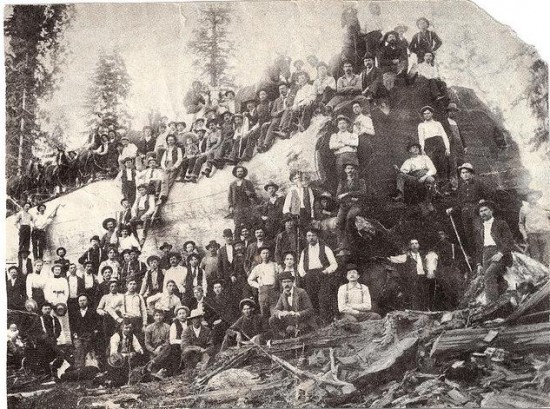 People and Horses on a Gigantic Redwood Log; about 1900.
“This photo is open for down loading for anyone wishing a free copy. Unknown Photo History. I’m fairly certain the tree was a Coast Redwood (Sequoia semperviren) or a Giant Sequoia (Sequoiadendron giganteum) from Central to Northern California or Oregon. I wish this one was still standing. The bark has already been stripped off of it.” [Source: Photo of old photo by David Foster, http://www.flickr.com/photos/21734563@N04/2225069096/] People and Horses on a Gigantic Redwood Log; about 1900.
“This photo is open for down loading for anyone wishing a free copy. Unknown Photo History. I’m fairly certain the tree was a Coast Redwood (Sequoia semperviren) or a Giant Sequoia (Sequoiadendron giganteum) from Central to Northern California or Oregon. I wish this one was still standing. The bark has already been stripped off of it.” [Source: Photo of old photo by David Foster, http://www.flickr.com/photos/21734563@N04/2225069096/]
.
.
Editor’s Comment:
I empathise with David Foster. – ‘I wish this one was still standing‘. Every face in this 1900 photo conveys cultural achievement and exploitative pride.
Now in 2011, has human attitude and on-ground impact toward ‘Old Growth’ really changed any?
Consider ‘Merbau’ timber, readily available from local timber yards across Australia and in New Zealand as ‘Kwila’ (Botanical names: Intsia bijuga and Intsia palembanica). Comparable old-growth rainforest hardwoods include Narra, Yakal, and Ipil. These old growth giants continually to be currently logged illegally deep in rain forests of the Philippines, Solomon Islands, Fiji and Papua New Guinea. Australian and New Zealand households profit from SE Asian rain forest destruction.
The lost natural assets of giant trees, of old growth have diminished the Earth, and have diminished the value of humanity, and of humanity’s value to the Earth. To forest habitat we are but marauders and rapists.
Humanity has become ‘Earth’s Pathogen’.
.
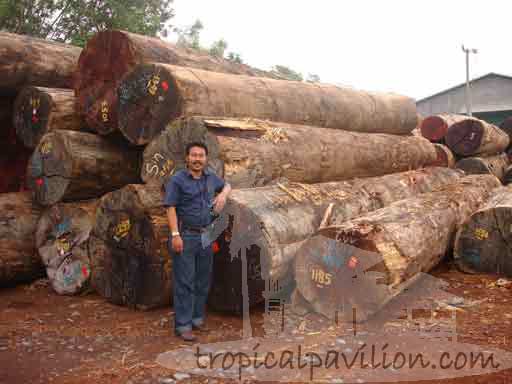 . .
 SE Asia old growth Rainforest Kwila is marketed in Australia and New Zealand as ‘Merbau’
for use mainly in flooring and decking,because of its relative hardness (high Janka rating) and long term stability. SE Asia old growth Rainforest Kwila is marketed in Australia and New Zealand as ‘Merbau’
for use mainly in flooring and decking,because of its relative hardness (high Janka rating) and long term stability.
.
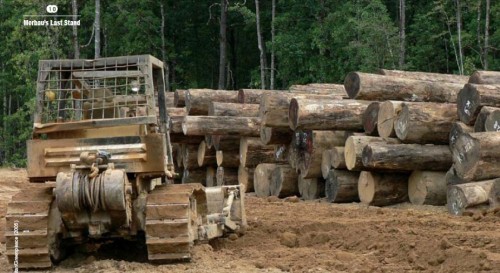
.
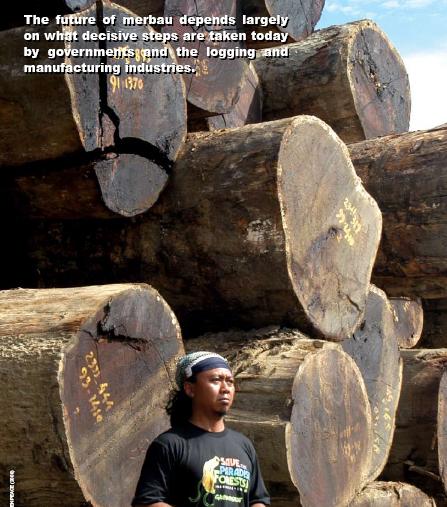
.
.
Rimbunan Hijau Group of Companies
.
“Malaysia’s largest timber group is Rimbunan Hijau (“Forever Green”) (Forbes, 1995). It has timber concessions in Sarawak of around 800,000 hectares (FT,1994), dominates Papua New Guinea’s forestry sector and has forestry interests in New Zealand and China, as well as diversifying into other activities such as the ownership of newspapers in Malaysia and Papua New Guinea (AsiaMoney, 1995). Rimbunan Hijau also owns a 40% share in Limgang Trading Sdn., which has a 310,000 hectares concession in Sarawak (55% of Limbang is owned by Sarawak’s Minister for the Environment and Tourism, James Wong Kim Min) It is privately owned and controlled by one family, headed by Tiong Hiew King. The family are estimated to be worth about US$2.5 billion (Forbes, 1995).”
“Whilst it remains largely a private group of companies, whose operations are veiled in secrecy, the Tiong family has sought to obtain a more public face through the reverse take-over of Berjaya Textiles Bhd (now renamed Jaya Tiasa Holdings Bhd), giving it a listing on the Kuala Lumpur Stock Exchange (FT 1994). Its overseas logging operations appear to remain under the control of the private parts of the group and in Papua New Guinea it is the dominant player through control of a number of associate and subsidiary companies. There are recent rumours that Rimbunan Hijau group owns, or is in the process of acquiring, Primegroup Holdings, a British Virgin Islands registered company with logging interests in Guyana and Papua New Guinea. If this is true, then Rimbunan Hijau group’s international logging interests are, or will shortly become, even more extensive, both geographically and in terms of size. Apart from its logging activities, the company has interests in banking, newspapers and oil-palm plantations. One of Hiew King’s younger brothers is a member of the Malaysian Parliament. Despite the company’s political connections, it has been caught for tax evasion, the Asian Wall Street Journal reported.”
.
[Source: Greenpeace, 1997, http://archive.greenpeace.org/comms/97/forest/asian_companies_malaysia.html, accessed 20110325].
.
“Rimbunan Hijau is a Malaysian based global forest logger and controls around 60% of the forest industry in Papua New Guinea. Rimbunan Hijau is Logging vast areas of virgin PNG forest against national opinion and local customs which infringes on the traditional rights of indigenous resource owners.
- (It is) accused in PNG Government reports of gross human rights abuses, labor abuses, sexual abuses and illegal logging.
- Causing destruction of ancient natural forest and associated systems.
- Conducting broad scale industrial logging operations that infringe on the rights of local people to establish and exploit alternative economic opportunies.
- Is influencing political and other processes to gain and maintain a near monopoly on PNGs forest resources and avoid adequate scrutiny and monitoring of its operations.
- Rimbunan Hijau uses the media to promote its operations to the PNG public – Rimbunan Hijau already OWNS The National newspaper and LEGAL THREATS against their only competitor, the Post Courier, have left it wary of criticising Rimbunan Hijau. These have been the only two print media outlets since The Independent was closed down.”
.
[Source: http://www.forestnetwork.net/rhw/]
.
Rimbunan Hijau is ultimately 50% owned by the Boral “Group” of Australia and 50% by Caltex.
[Source: http://www.scribd.com/doc/24211537/2258-Christchurch-New]
.
…so when Australians and New Zealanders buy Merbau timber from local timber yards, hardward stores and furniture retailers – they are driving South East Asian old growth rainforest deforestation.
.
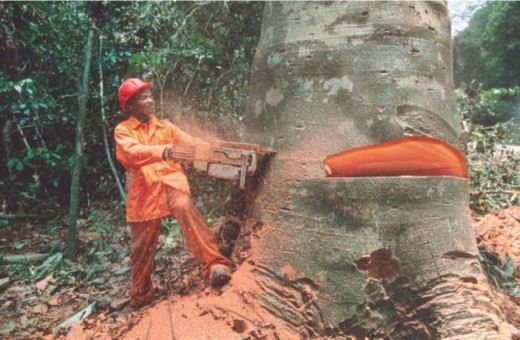
.
.
(The following article from The Guardian in February 2011 is by forests officer for WWF Indonesia, Jimmy Bond, based in West Kalimantan on the island of Borneo)
.
Complacency over deforestation pushes orang-utan closer to extinction
.
“Illegal logging and hunting continues despite legal protection, so the WWF is raising awareness to help save the orang-utan.
The destruction of the world’s rainforests continues at an alarming rate. Where I’m from in Borneo, illegal logging, coupled with hunting, is driving species such as the orang-utan ever closer towards extinction.
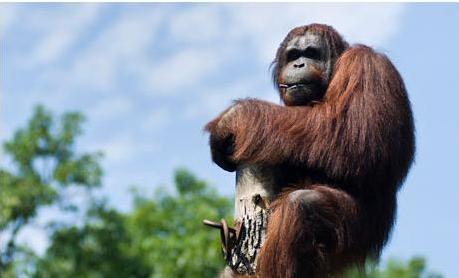 Borneo male orang-utan Wandoo.
There are fewer than 2,000 wild orangutans left in the West Kalimantan province, Indonesia.
©Photograph: Attila Balazs/epa/Corbis Borneo male orang-utan Wandoo.
There are fewer than 2,000 wild orangutans left in the West Kalimantan province, Indonesia.
©Photograph: Attila Balazs/epa/Corbis
.
There are three subspecies of orangutan in Borneo and we only have about 2,000 orangutans left in the wild in West Kalimantan province, and through deforestation and hunting their numbers continue to fall. Just last month I heard from villagers that some people are still killing and eating them even though they’re supposed to be protected by law.
I’ve just been travelling around the region in this part of Indonesia as I’ve been running a series of summer schools as part of a WWF awareness campaign to highlight the problems facing the orang-utan.
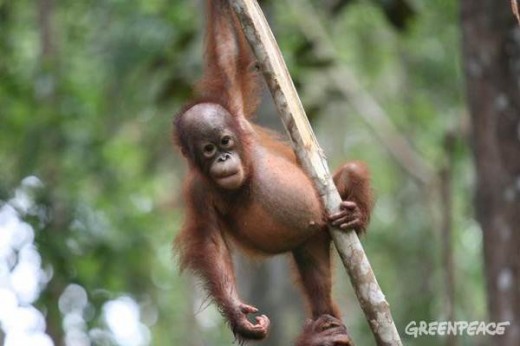
Over the past two years, the main focus for the campaign has been children because we’ve found it very difficult to change the minds and attitudes of older generations. We invite the kids to come along to these camps from nearby villages and at the last one more than 200 kids turned up. We do many different activities from drawing to tug-of-war competitions but the over-arching aim is to touch their hearts with stories about this wonderful creature and the rainforests in which they live. We want to leave them with the understanding that these unique creatures need protecting.
We’re also starting to join forces with local government officials and religious leaders to spread the message to communities that live in traditional longhouses. We tell them about a recent success story that acts as a warning against killing orang-utans. One trader in Pontianak, where I’m based, was recently jailed for two years for trading orang-utans.
Such discussion also helps us talk about their habitats and the need to protect them too. In West Kalimantan from 1995, large-scale illegal logging cut through a forest corridor that linked two national parks where one of three subspecies of orang-utan (Pongo pygmaeus pygmaeus) lives. This meant they couldn’t migrate between the two areas and their numbers dropped significantly. This was made worse because the illegal loggers who came here to work also hunted meat from the forests and the orang-utans were in the firing line.
Over the past few years we’ve been trying to highlight these problems to the international media because some of the illegally logged timber was transported over the border to Malaysia where it is made into wood products that are shipped all over the world. Globally, we want people to become educated about where the timber that makes their furniture comes from and the harm it is doing to species and communities. When the forest disappears people no longer have access to food and medicines plus we have also seen more flooding as a result of deforestation. The international media focus also helps push our government to react because not so long ago they were doing nothing to help.
Recently, we’ve seen companies get permits from the government to develop palm oil plantations. But what’s worse is that the permits are just a smokescreen for the companies to get at the timber and leave without planting any palm oil.
So we’re working to make indigenous communities aware of this practice and the best way to do this is by bringing in others who have seen this happen on their land to warn them. If they are forewarned then they know not to allow it to happen to their own communities. These people need to have the forest in good condition because it’s not only home to different species, it’s also where they earn their livelihood.
Looking to the future, my big ambition is to set up an orang-utan rehabilitation centre here in West Kalimantan for subspecies Pongo pygmaeus pygmaeus. At the moment, orphaned babies are taken to other parts of the country where they are kept with the two other subspecies. I want them to be able to breed with their own kind otherwise they could die out. And I fear that if the orangutan disappears, the rainforest won’t last much longer either.”
[Source: The Guardian newspaper (UK) , http://www.guardian.co.uk/environment/blog/2011/feb/03/indonesia-deforestation-orangutan-extinction, accessed Feb 2011]
.
.
Further Reading
.
http://www.nps.gov/seki/historyculture/gfgst.htm
http://en.wikipedia.org/wiki/Intsia_bijuga
http://www.indonesianrainforest.org/irf-news/373-campaign-against-kwila-imports-continues-.html
http://rainforest-action.blogspot.com/2010/09/end-sales-of-kwila-timber-products.html
http://www.greenpeace.org/new-zealand/en/press/illegal-kwila-timber-imports-f/
http://www.info-ri.com/indonesia/rainforest-action-end-sales-of-kwila-timber-products/
http://www.robcousens.com.au/files/D512143129.pdf
http://www.dansson.com/kwila.htm
http://www.greenpeace.org/international/Global/international/planet-2/report/2008/7/merbau-report-2.pdf
Greenpeace, 1997, http://archive.greenpeace.org/comms/97/forest/asian_companies_malaysia.html
http://www.coolearth.org/306/whats-new-32/news-155/illegal-logging-threatening-malaysian-wildlife-453.html
http://www.wwf.org.my/media_and_information/wwf_position_statements/?5741
http://www.ewp.asn.au/certification/certificationcoc.html
http://www.forestnetwork.net/rhw/
http://www.atif.asn.au/
http://www.scribd.com/doc/24211537/2258-Christchurch-New
http://www.baddevelopers.green.net.au/Docs/talltrees.htm
The Guardian newspaper (UK) , http://www.guardian.co.uk/environment/blog/2011/feb/03/indonesia-deforestation-orangutan-extinction
.
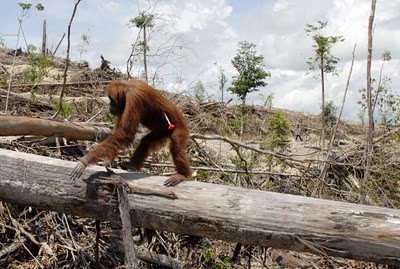 . .
Tags: Boral Group, Californian redwood, Caltex, commercial logging, deforestation, Earth's Pathogen, Eucalyptus regnans, Ferguson Tree, General Sherman Sequoia, Giant Forest, giant redwood, Guam, hallowed majesty, human pathogen, illegal logging, Intsia bijuga, Janka rating, Kalimantan, Kwila, Merbau, merbau flooring, Merbau's last stand, Narra, Neerim, old growth conservation, old growth forest, orang-utan, orang-utan extinction, Oregon, Primegroup Holdings, Rainforest Kwila, Rimbunan Hijau, San Joaquin Valley, Sarawak, Sequoia sempervirens, Sequoiadendron giganteum, Sierra Nevada, significant trees, world's largets tree, Yakal
Posted in 31 Old Growth Conservation!, Congo (CD), Kalimantan (ID), Sumatra (ID), Threats from Deforestation | No Comments »
Add this post to Del.icio.us - Digg
|
|
 New house for sale on the Blue Mountains Escarpment
featuring “Tasmanian Oak hardwood flooring” as a key selling point.
[Photo by Editor, 20120111, Photo © under ^Creative Commons]
New house for sale on the Blue Mountains Escarpment
featuring “Tasmanian Oak hardwood flooring” as a key selling point.
[Photo by Editor, 20120111, Photo © under ^Creative Commons]
 Eucalyptus regnans
before becoming someone’s Tassie Oak floor
Eucalyptus regnans
before becoming someone’s Tassie Oak floor
 Only ‘sawlog’ sections of MATURE large hardwood trees are suitable for flooring
If there are no branch knots in the timber, then the timber has come from the trunks of mature large hardwood trees.
Such trees are not from plantations, but from rare and disappearing forest habitat.
Only ‘sawlog’ sections of MATURE large hardwood trees are suitable for flooring
If there are no branch knots in the timber, then the timber has come from the trunks of mature large hardwood trees.
Such trees are not from plantations, but from rare and disappearing forest habitat.










































































